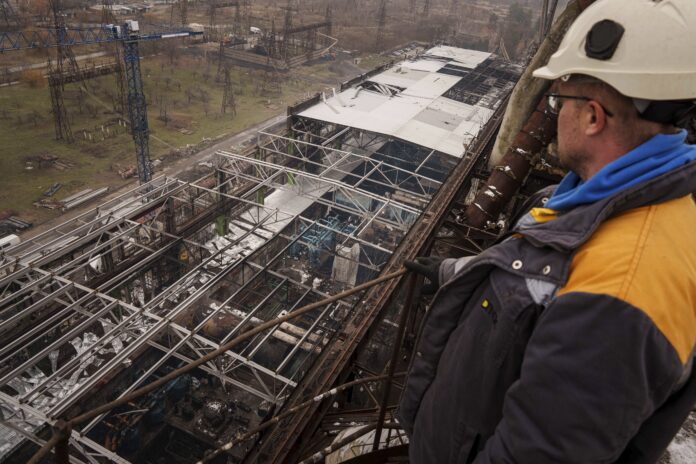On a crisp winter day, workers at a Ukrainian thermal power plant labor tirelessly to repair equipment battered by Russian airstrikes. Water drips from melted snow through gaping holes in the roof, while employees tread frozen floors and rely on firewood to stay warm—a stark reflection of the country’s ongoing energy crisis.
“This is our life now,” says Oleksandr, 52, head of the plant’s Production Management Department. “Workers at a thermal power plant that’s supposed to produce electricity are walking on frozen floors.” Oleksandr, speaking under the condition that only his first name be used for security reasons, described the grim conditions to The Associated Press.
Infrastructure Under Siege
Weeks earlier, the facility endured a devastating Russian air attack, leaving scorch marks, missile fragments, and shrapnel scars in its wake. Such assaults on energy infrastructure have become routine in Ukraine, triggering rolling blackouts and impacting millions.
On Thursday alone, Russian forces launched nearly 200 drones and missiles targeting critical infrastructure, disrupting power for over a million people. Since the full-scale invasion in 2022, Ukrainian energy facilities have faced relentless strikes, with DTEK—Ukraine’s largest private energy company—reporting nearly 200 attacks on its plants.
“Before the war, DTEK generated around 20% of Ukraine’s electricity,” Oleksandr says. “Now, that figure has dropped to 12% as nearly 90% of the company’s infrastructure has been damaged or destroyed.”
Challenges in Repairing a War-Torn Grid
Repairing the power plant is an enormous task. Much of the equipment was manufactured in the Soviet Union, making replacement parts scarce. Ukraine’s allies, including former Soviet countries, have stepped in to help supply compatible equipment, but the process remains arduous.
Western nations have also pledged support. Earlier this week, the European Commission and the U.S. government announced $112 million in equipment and construction materials to bolster DTEK’s operations ahead of winter. Despite these efforts, only half of DTEK’s generating capacity has been restored since the first wave of attacks in November 2022.
A Daily Battle on the Energy Front
For the workers, the job is a constant test of resilience. During air alerts, a minimal crew stays in the control room to monitor operations, even as missiles threaten their safety.
“You have to sit and wait, tracking the trajectories of whatever was fired,” says Dmytro, 41, a power unit operator. “But the power units keep working, so we cannot just leave. If the equipment fails, the entire city will lose electricity and heating.”
Despite the danger, Dmytro and his colleagues remain committed to their mission: keeping the lights and heat on for their community during the bitter winter months.
“Who’ll do it, if not us?” Dmytro asks. “Some are risking their lives on the frontline, while we fight our own battle here on the energy front.”
As the war stretches into its third year, the staff at Ukraine’s power plants press on, embodying the resilience and determination of a nation under siege.


